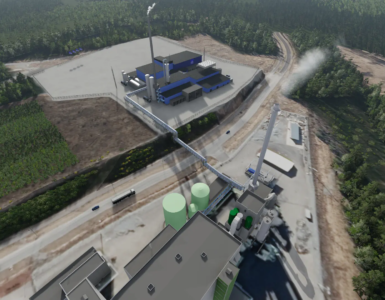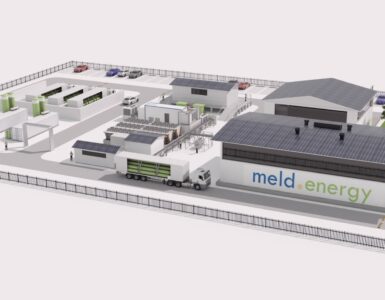How E.ON is building commercial-scale green hydrogen projects for a new energy world – Forbes.
Carsten Borchers, a former data scientist, strategist and general manager from the software industry, did not plan to become one of the managing directors at E.ON Hydrogen, a business area of E.ON, one of Europe’s largest operators of energy networks and energy infrastructure. He came to the company to focus on electrification and digitalization – key aspects of the energy transition and E.ON’s strategy.
Yet, Borchers could not ignore the potential of another emerging topic – hydrogen. After months of analysis and countless discussions with industry players, he shaped the strategy embracing the opportunities in the emerging hydrogen space and soon found himself wrapped up in this exciting new world. Not that there is anything new about hydrogen.
Transitioning to renewables
Carsten Borchers, at the recent TAC-sponsored International SAP Conference for Utilities in Basel, Switzerland.
There is no question that hydrogen is one of the most important energy carriers that will strongly contribute to making our world independent of fossil fuels.
“In particular, green hydrogen will enable us to significantly reduce CO2 emissions in the near future, especially in industry and transport.”
What makes this ancient building block of life so attractive as a sustainable source of energy are its general properties. It is infinitely available, since it is bound in water, which must be separated into Hydrogen and Oxygen. If this is done with green electricity, the H2 is carbon free.
E.ON has an impressive portfolio – the top network operator in Europe, the company has around 72,000 employees servicing 48 million customers in 15 countries and 1.6 million kilometers of energy networks.
“This pan-European network is crucial in our projects for connecting customers to renewable energy sources. Fossils fuels are still a part of the energy landscape and will continue to play a role during the transition,” Borchers explained.
Gas, though expensive, will remain necessary in the next decades in applications such as industrial processes, heating of non-efficient dwellings and providing electricity and mobility. But renewables are becoming more and more cost competitive, and hydrogen is gaining momentum.
Developing the hydrogen market
The market is developing in three phases. First, decentralized, local pilots are taking place on a small scale. In these cases, hydrogen is produced close to the point of consumption, but production is not scalable to meet future demand.
At the same time, regional clusters of green hydrogen hubs are being created close to renewable energy sources as consumption is being scaled up. And finally, a comprehensive international infrastructure is being built to connect production hubs with clusters of hydrogen gas as a commodity product.
Just as renewables are reaching specific tipping points during the 2020s as to when they become as or more cost effective than fossil fuels, key sectors such as industry, power, transportation, and heating will all have different tipping points for green hydrogen. Each of these sectors have their own subsectors – such as aviation, maritime, and rail within transportation – each with different timelines as to when hydrogen applications will be available for up-, mid-, and downstream processes.
“This is a classic case of building the ship while we are sailing,” said Borchers. “There are separate strategies and portfolios for each sector, along with a number of overarching projects dealing with regulations, market developments, financials, controlling, and the development of a skilled workforce.”
Pioneering projects
As a leader in shaping a green, digital, and decentralized energy world, E.ON is involved in a number of leading-edge ventures such as helping the iron and steel industry decarbonize with new feedstock. E.ON has partnered with LindeLIN -0.4%, the world’s largest industrial gas company, and Salzgitter, the German steel giant, to help produce steel without emitting CO2.
Currently, about two tons of CO2 are emitted per ton of steel produced in the traditional way. By replacing coal with hydrogen, Salzgitter aims to deliver green steel as of 2025. Thanks to this cross-sector project, green hydrogen will be produced at the steelworks using electricity generated by six massive wind power turbines. During the transitional phase, Salzgitter will use a mixture of natural gas and hydrogen before switching exclusively to hydrogen.
Leading-edge ventures require leading-edge technology. E.ON recently implemented SAP S/4HANA as its new platform to promote innovation, enable new business models, and provide management with trustworthy figures to make quick decisions. The platform is key to E.ON’s digitalization strategy to establish green hydrogen and its secondary products as pivotal elements in decarbonization together with its customers and partners in business and politics.
“Net-Zero is a competitive advantage that customers cannot afford to miss,” Borchers added. “We finally have tools to bridge the financial gap, which boosts the potential for hydrogen to become the industry response for a real turnaround.”
How E.ON Is Building Commercial-Scale Green Hydrogen Projects For A New Energy World, May 30, 2023









